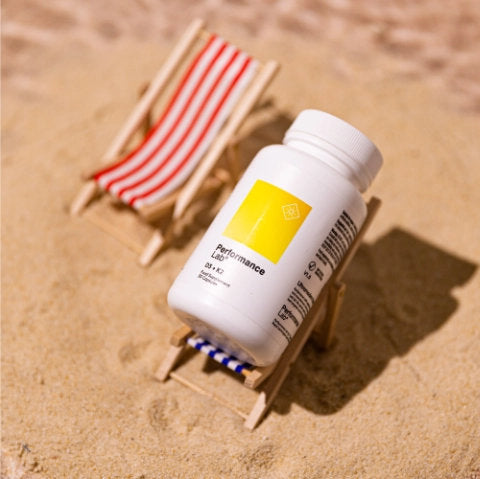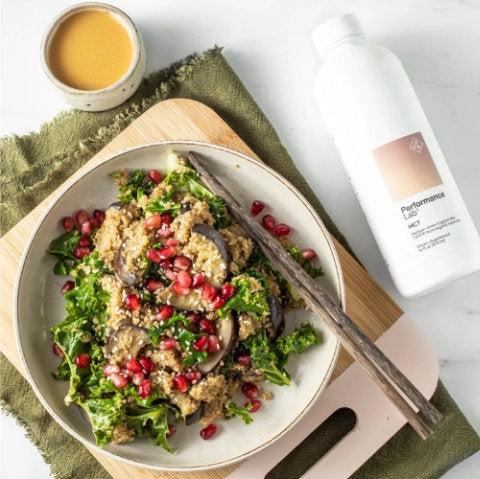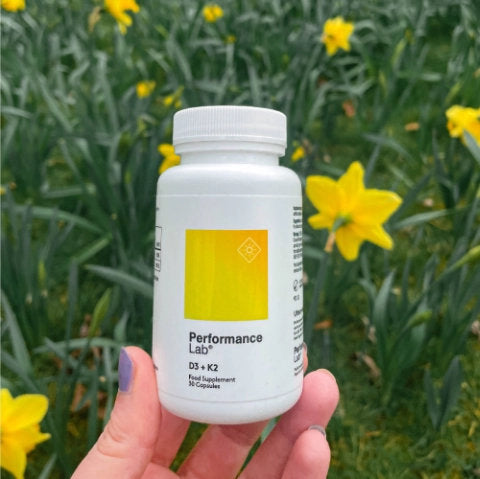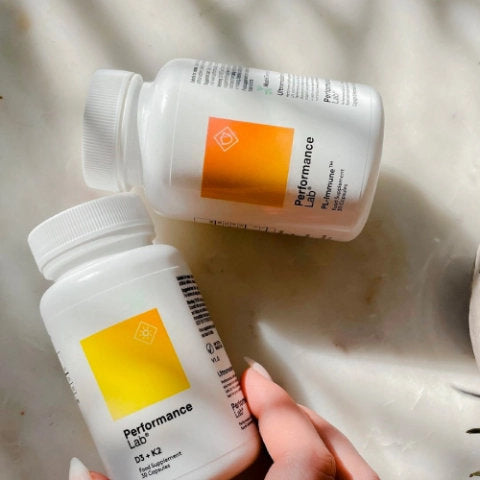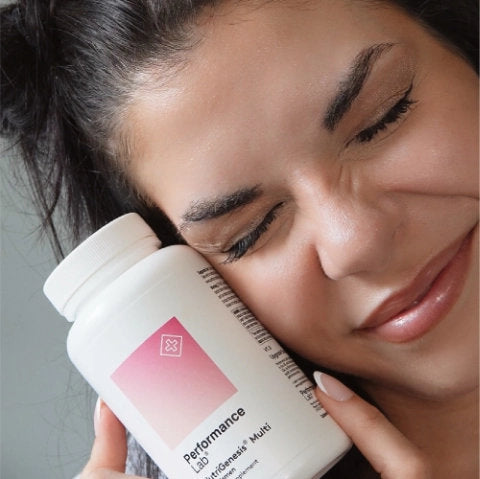When it comes to treating inflammation and any inflammatory-based condition, most people’s first line of defense is over-the-counter prescriptions like NSAIDs or Tylenol.
But with the rise in understanding of natural compounds—and the increasing incidence of adverse effects from prescription drugs—people are looking for alternatives that may be equally, if not more effective than OTC anti-inflammatories. By no stretch of the imagination are these compounds new—in fact, they’ve been used for centuries in Eastern medicine—but they’re rising to the forefront for treatment of pain and inflammation in the West, and we’re getting on board with it. Right now, we’re talking about two powerful herbs and how they connect. We’re diving into the world of Boswellia, also known as Indian frankincense, and turmeric. When combined, they make a powerful dietary supplement designed to support joint health, inflammation, and overall health and well-being.
What Is Boswellia And What Does It Do?
Boswellia serrata, also called Indian Frankincense, is a large branching tree native to the dry mountainous regions of India, Northern Africa, and the Middle East 1. It is a family represented by more than 600 species widespread in all tropical regions.
Of the species, Boswellia serrata is the most widely used. It is one of the most ancient and highly valued herbs in Ayurvedic medicine and has been used for centuries in the treatment of arthritis, along with diarrhea, skin disease, cardiovascular disease, bronchitis, vaginal issues, asthma, hair-loss... and a whole lot more. Modern medicine, however, points to Boswellia for use as an 1:
- Antiarthritic
- Anti-inflammatory
- Antihyperlipidemic (regulates blood lipids)
- Anti-atherosclerotic (anticoronary plaque)
- Analgesic (pain-reliever)
- Hepatoprotective (protects the liver)
The benefits of Boswellia have largely been attributed to the presence of boswellic acids, especially 11-keto-B-boswellic acid (KBA) and acetyl-11-keto-B-boswellic acid (AKBA), which have been shown to inhibit 5-lipoxygenase (5-LO), a pro-inflammatory enzyme 2.
5-LO produces inflammatory leukotrienes, which promote inflammation by causing free radical damage, calcium dislocation, cell adhesion, and migration of inflammation-producing cells to inflamed areas of the body 1.
Its anti-inflammatory properties have also been attributed to its ability to inhibit tumor necrosis factor-alpha (TNF-alpha), interleukin-1beta (IL-1beta), NO, and mitogen-activated protein (MAP) kinases 3.
What Is Turmeric And What Does It Do?
Turmeric, the common name for Curcuma Longa, is an Indian spice belonging to the ginger family that’s been used for centuries as a spice, food preservative, and coloring agent 4.
It’s been a staple in Ayurvedic medicine for the treatment of various health conditioning, including arthritis, ulcers, jaundice, wounds, fever, trauma, and skin diseases like psoriasis 5. Curcumin, on the other hand, is a polyphenol that is the primary active constituent of turmeric. In addition to curcumin, turmeric also contains several other types of curcuminoids such as demethoxycurcumin, bisdemethoxycurcumin, and the recently identified cyclocurcumin 4.
Of the curcuminoids, curcumin is the most commonly researched, and it possesses the most potent health-promoting properties. That explains why most commercial preparations contain roughly 77% curcumin, 17% demethoxycurcumin, and just 3% bisdemethoxycurcumin. Over the last 50+ years, more than 3000 studies have looked at the role of curcumin as a powerful antioxidant, antibacterial, antifungal, antiviral, anti-inflammatory, antiproliferative, pro-apoptotic, and anti-atherosclerotic compound, exhibiting medical benefits for several diseases, including 4:
- Neurodegenerative diseases
- Arthritis
- Allergy
- IBS
- Nephrotoxicity
- AIDS
- Psoriasis
- Diabetes
- Multiple sclerosis
- Cardiovascular disease
- Lung fibrosis
Curcumin exhibits such powerful effects on nearly every system in the body. That's because it interacts with several different cells that modulate its actions, including transcription factors, growth factors and protein kinases, inflammatory cytokines, enzymes, adhesion molecules, apoptosis-related proteins, and more 4.
What Is The Link Between Boswellia And Turmeric?
So, what do these two compounds have in common, or rather, how do they complement each other to support health? Curcuminoids and the gum resin of Boswellia have been used for centuries in Ayurvedic medicine to bring relief to people dealing with inflammatory and degenerative health conditions 6. While both curcumin and Boswellia have proved successful in the treatment of arthritis, the chemical structures of both compounds are quite different. Consequently, their primary molecular targets are also different 7.
The active compounds in both of these plants work via multiple mechanisms, rather than targeting a single enzyme or receptor. Therefore, they offer synergistic interactions that can treat inflammatory-based conditions like osteoarthritis (OA). Although the “wear and tear” of cartilage over time has long been considered the primary mechanism behind OA, more recent studies have found that inflammatory processes may have a large impact 6.
In many cases of OA, the earliest signs of onset are decreasing levels of proteoglycan within articular cartilage, proceeded by degradation of type II collagen, bone remodeling, and synovial inflammation 8.
Some studies suggest that the release of inflammatory cytokines drives the continual degradation of cartilage, which is exacerbated by the subsequent activation of other inflammatory mediators 9. But studies have found that the use of curcuminoid and Boswellia formulations may stop, or at least slow, the catabolic actions of key inflammatory mediators in the early stages of the disease, and may continue to block the inflammatory pathways involved with the progression of OA.
Research indicates that both curcuminoids and Boswellia can counteract decreases in glycosaminoglycan levels and interfere with secretion and activity of MMPs, which could essentially prevent further degradation of cartilage 6. Not only that, but curcuminoids act as inhibitors of the enzyme cyclooxygenase-2 (COX-2), which is linked to inflammation and pain, by blocking the action of tumor necrosis factor (TNF) 10.
Boswellic acid, on the other hand, can inhibit the 5-lipooxygenase (LOX) pathway, which is a primary source of pro-inflammatory leukotrienes 11, 12.
Both curcuminoids and acetyl-keto-beta-boswellic acid (AKBA), one of the active commands of Boswellia serrata gum resin, have also been shown to inhibit the inflammatory molecule nuclear factor κB (NF-κB) and its gene products, some of which have direct involvement in the processes of osteoclastogenesis and the resorption of bone 6. With that said, there’s a fair bit of evidence suggesting that combining Boswellia and curcumin exhibits profound anti-inflammatory effects that could extend beyond treatment of OA, but also towards other diseases with an inflammatory component.
Because the typical treatment with NSAIDs may actually negatively affect cartilage metabolism over time, herbal preparations may be safer and more effective alternatives.
Final Thoughts
If you’re looking for ultimate joint health and comfort, there’s only one supplement for you.
Performance Lab® Flex soothes and protects achy joints with innovative and easy on the stomach botanicals AprèsFlex® Boswellia serrata and CurcuWIN® curcumin.
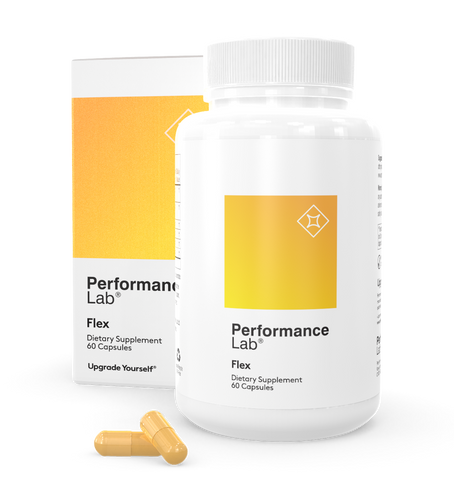
Flex also lubricates and nourishes joints with Mythocondro® chondroitin, OptiMSM®, and corn glucosamine curated and combined for active joint demands. It’s a superior formula tailored for peak flexibility, resilience, and comfort across all activities.
References
- MZ Siddiqui. Boswellia serrata, a potential antiinflammatory agent: an overview. Indian J Pharm Sci. 2011;73(3):255-261.
- M Abdel-Tawab, O Werz, M Schubert-Zsilavecz. Boswellia serrata: an overall assessment of in vitro, preclinical, pharmacokinetic and clinical data. Clin Pharmacokinet. 2011;50(6):349-369.
- B Gayathri, N Manjula, KS Vinaykumar, BS Lakshmi, A Balakrishnan. Pure compound from Boswellia serrata extract exhibits anti-inflammatory property in human PBMCs and mouse macrophages through inhibition of TNFalpha, IL-1beta, NO and MAP kinases. Int Immunopharmacol. 2007;7(4):473-482.
- H Zhou, CS Beevers, S Huang. The targets of curcumin. Curr Drug Targets. 2011;12(3):332-347.
- S Singh. From exotic spice to modern drug?. Cell. 2007;130(5):765-768.
- RR Bannuru, MC Osani, F Al-Eid, C Wang. Efficacy of curcumin and Boswellia for knee osteoarthritis: Systematic review and meta-analysis. Semin Arthritis Rheum. 2018;48(3):416-429.
- A Haroyan, V Mukuchyan, N Mkrtchyan, et al. Efficacy and safety of curcumin and its combination with boswellic acid in osteoarthritis: a comparative, randomized, double-blind, placebo-controlled study. BMC Complement Altern Med. 2018;18(1):7.
- JT Mäkelä, SK Han, W Herzog, RK Korhonen. Very early osteoarthritis changes sensitively fluid flow properties of articular cartilage. J Biomech. 2015;48(12):3369-3376.
- F Berenbaum. Osteoarthritis as an inflammatory disease (osteoarthritis is not osteoarthrosis!). Osteoarthritis Cartilage. 2013;21(1):16-21.
- Y Henrotin, F Priem, A Mobasheri. Curcumin: a new paradigm and therapeutic opportunity for the treatment of osteoarthritis: curcumin for osteoarthritis management. Springerplus. 2013;2(1):56.
- H Hedi, G Norbert. 5-Lipoxygenase Pathway, Dendritic Cells, and Adaptive Immunity. J Biomed Biotechnol. 2004;2004(2):99-105.
- S Schweizer, AF von Brocke, SE Boden, E Bayer, HP Ammon, H Safayhi. Workup-dependent formation of 5-lipoxygenase inhibitory boswellic acid analogues. J Nat Prod. 2000;63(8):1058-1061.





